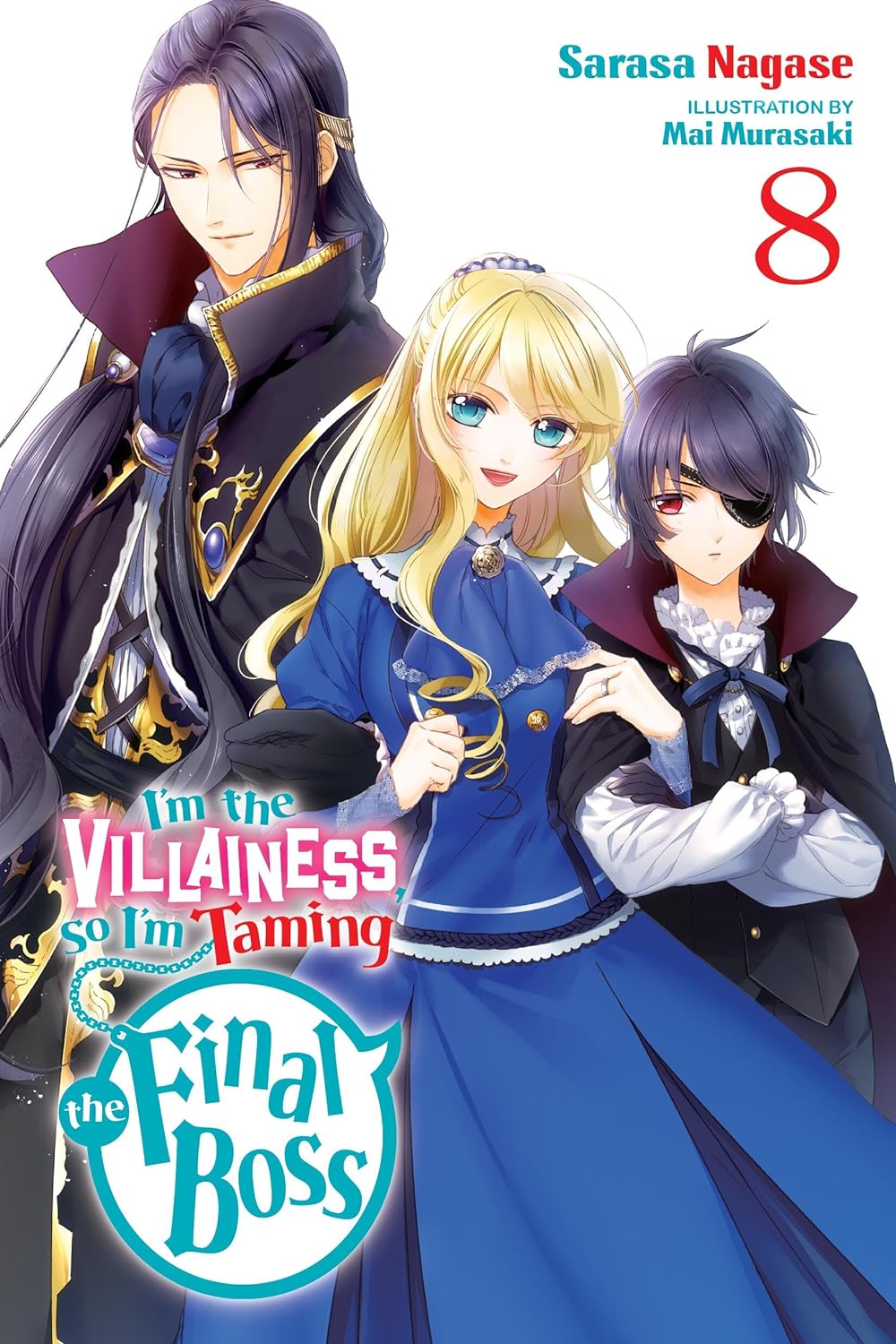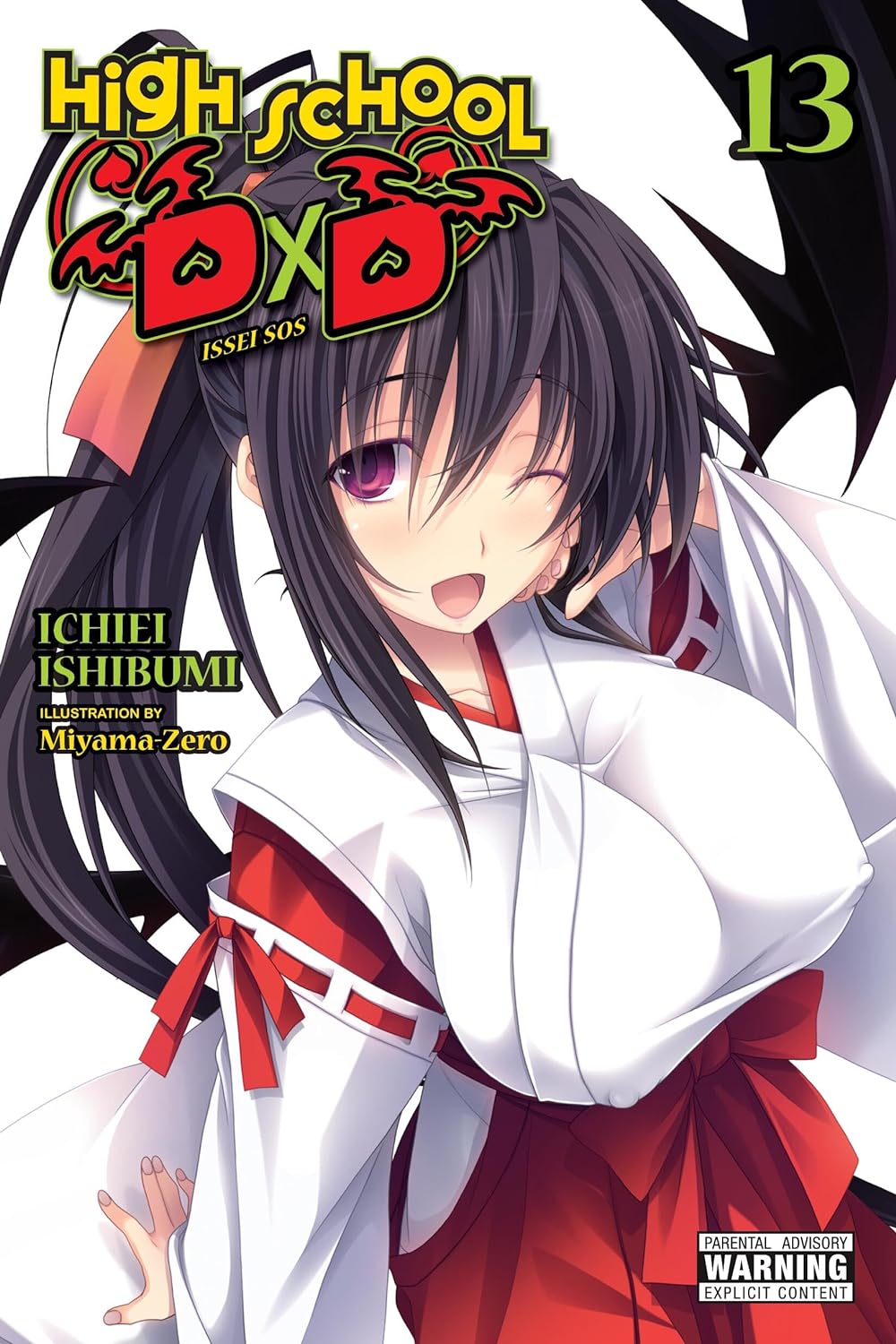By Sarasa Nagase and Mai Murasaki. Released in Japan as “Akuyaku Reijo Nanode Rasubosu o Katte Mimashita” by Kadokawa Beans Bunko. Released in North America by Yen On. Translated by Taylor Engel.
Despite the fact that there are still three volumes to go after this, according to the author, this is the end of the main series. And it’s a real corker of an ending, giving us one last crisis for the road, where Aileen is not under threat of execution (it’s hard to do that now that she’s the Empress), but the world is still in danger, and more importantly, her family is in danger. This is when Aileen “rampages”, as Claude puts it, and she certainly does so here, kicking people in the face, doing all sorts of Holy Sword tricks, and otherwise being the badassest badass to ever badass. What’s more, the series continues to hammer on its themes: fate is something to rebel against, no one is irredeemable, and your love can indeed save the world. Indeed, it had better. Aileen literally says at the climax that saving Claude is her only goal. If she saves the world too, that’s just a bonus.
Covers always spoil, huh? So yes, everything is peachy keen with our heroes, although Aileen is worried about whether she’ll be able to bear children for Claude. Suddenly a mysterious but incredibly powerful teenage boy arrives, who looks like Claude. With an eyepatch and an emo streak a mile wide. He immediately puts the entire nation (almost) to sleep, puts a barrier over it, and heads over to Ashmael, where Roxane is about to give birth. He’s not the only mysterious stranger to arrive, however, as a young woman follows, who seems to know who this mysterious teen is… and also looks an awful lot like Baal. If you guessed this was a “kids from the future” plot, you get no prize, as it’s obvious. But the kids aren’t the threat.
Most of the secondary cast play a smaller role in this volume, but there’s one big exception to that, and of course it’s Lilia. We had to somehow do something with her before the end of the series, as she’s the only one who is deliberately trying not to grow and change. That finally ends here, however. Yes, there are not one but *two* new otome games that came out in Japan that this book is based on (Aileen died right after the 5th came out), but Aileen has broken the plot of the previous games so much that they don’t mesh anymore. I think that, more than her fiance Cedric, might be what causes Lilia to stop being a “player” and become a true heroine. I mean, don’t get me wrong, she’s still a massive asshole to everyone around her, but at least she’s no longer wishing for chaos to descend. Hell, she even hints in the final chapter that she, by “removing the all ages rating” (i.e., consummating with Cedric), allows Aileen to get pregnant. Aileen is the badass, but Lilia is still my favorite.
So we’re done! Good end! That said, as I noted, there’s more books coming. The next one is an after story, apparently. As always, in the top 5 villainess series out there.



